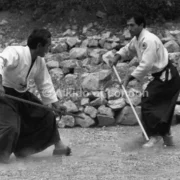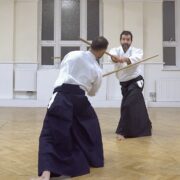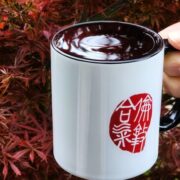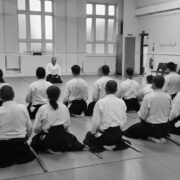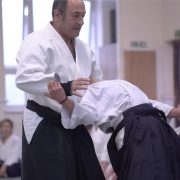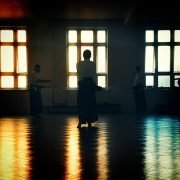Kiri otoshi or “cutting down”
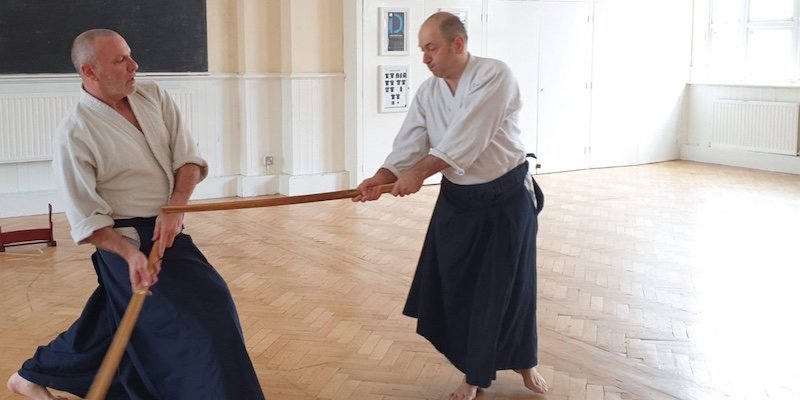
“Cutting down” or “striking down”. This is the simple translation of Kiri Otoshi as used in the weapons curriculum in Aikido. It is not unique to Aikido and its origins go back to the16th century and comes from the Ittō-ryū kenjutsu school founded by Itō Ittōsai. It has influenced many sword schools to include modern day Kendo. It is in principle quite simple. To strike down the enemy in one stroke. In contemporary Aikido training, if you have a good shomenuchi (vertical strike to the head) bokken cut, correct rhythm, posture and delivery then the possibility for Kiri Otoshi exists during partner practice.
Aiuchi or mutual strike is where the two opponents simultaneously cut each other down. However in Kiri Otoshi we have a “dominant” or live side and a “passive” or receiving side. This relates very much to Nage and Uke in regular Aikido training and hence the importance of sword work. The technique is to command the centre line between the two swordsmen or women. This is achieved by cutting down the centre of their cut to simultaneously parry their sword and cut them down in the same stroke. Effectively you are cutting them down. It needs timing and good distance and presence to achieve this well. The uke in turn has to just commit their attack, that is they have to go for the opening presented to them without hesitation or over thinking and have faith in this. The outcome is ukemi. It just happens. Rather than consciously trying to “take ukemi” you just do your part, attack and it happens, it takes care of itself.
The exercise is fantastic and it is its simplicity that makes it challenging. No tricks, no disguising, no other superfluous movements, just clean sword work. What remains is spirit and courage which are needed as much as any technique. There is a certain craziness to it. You approach your enemy deliberately creating an opening to draw them into an attack. At high level there is danger in that attack, as even a half decent cut will easily break your forearm or give you an almighty headache. Even short of that type of intensity there is still a risk element and it is the ability to function freely and uninhibitedly in that situation that is a part of the exercise. It is that element of danger, no matter how small, that elevates the exercise to something more potent and living. It is where spirit and courage are as important as technique and body movement.
The roles can potentially interchange. Nage and uke and back to nage. The uke here after absorbing the dominant cut can counter attack. This can be achieved by adhering to the fundamentals already pointed out. They are an organic outcome rather than a worked out and therefore made up exercise. Sometimes we do make it up but at some point we have to let it go as though we don’t know what is coming up. There is a beautiful and explosive version of this in Enter the Dragon. Whilst it is exaggerated and for movies and also empty hand work, it delivers the principle perfectly. Bruce Lee is poised in front of his opponent, their forward arms extended towards each other and in light contact, not dissimilar to two katana crossing blades. Bruce Lee, deflects the opponent’s arm, simultaneously preventing him from delivering his strike effectively and creating a momentary opening to deliver his own strike, all in one incredible move. Quite amazing as you need to be charged with energy and presence in order to have a chance of doing that.
As a tool for Aikido, it is a great way to establish that sense of the sword in the body but it also teaches us how to face a degree of danger with commitment rather than wilting away or lacking commitment. That is the paradox in this kind of training. Feel it, feel that danger and work with it until it becomes exciting and living and creative. It makes our Aikido richer and deeper in one stroke.
Jodan kiriotoshi with Yahe Solomon and Ismail Hasan filmed during the Aikido of London Spring Camp 2020 in North London

